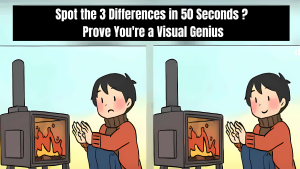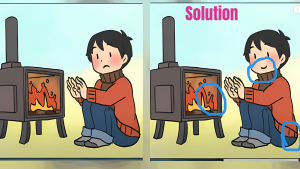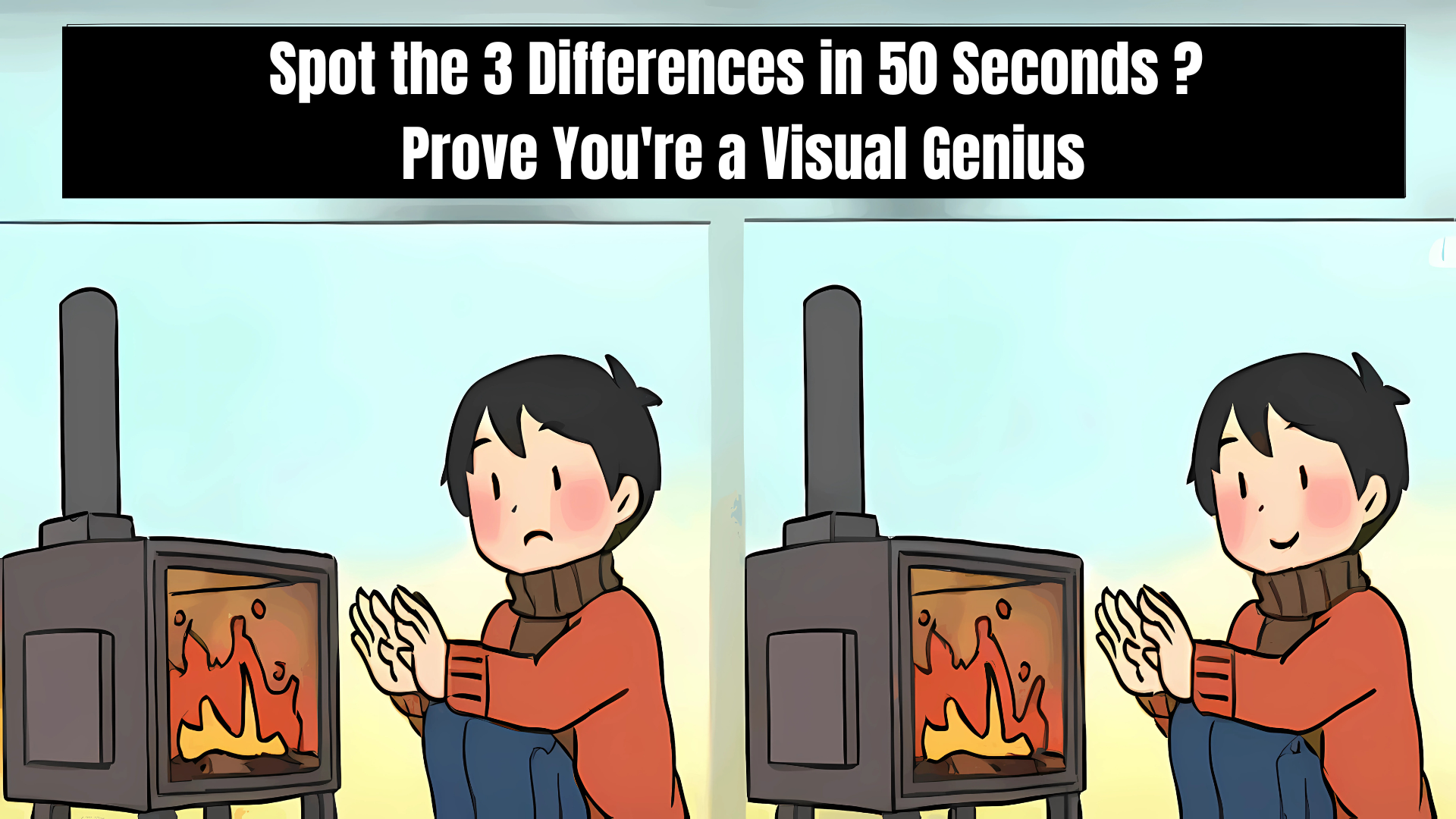Have you ever found yourself completely absorbed in those captivating “spot the difference” pictures? These seemingly simple visual puzzles do much more than just entertain us for a few moments.
They actually serve as powerful brain workouts that sharpen our cognitive abilities in ways we might not even realize.
The Fascinating Science of Visual Trickery
Our brains process an incredible amount of visual information every second. When confronted with optical illusions, this normal processing gets delightfully disrupted.
These clever visual tricks force our minds to work overtime, revealing fascinating insights about how we perceive the world around us.

Why We Can’t Resist a Good Visual Puzzle
There’s something undeniably satisfying about solving a tricky optical illusion. This natural attraction isn’t just random – it’s deeply rooted in how our brains evolved.
Our visual system constantly seeks patterns and meaning, making these puzzles particularly engaging to our pattern-hungry minds.
The satisfaction we feel upon solving them triggers a small but genuine dopamine release, creating that rush of pleasure we associate with accomplishment.
The 80-Second Challenge: Testing Your Visual Super Powers

Think you’ve got exceptional observation skills? The true test lies in spotting three differences between nearly identical images in just 80 seconds.
This time constraint creates the perfect balance of difficulty – challenging enough to engage you fully but not so difficult that it becomes frustrating.
What Happens in Your Brain During the Challenge
During a spot-the-difference challenge, your eyes perform rapid movements called saccades, jumping between the images in search of inconsistencies.
Your working memory simultaneously juggles multiple visual elements, creating a substantial mental workout that activates several key brain regions.
This process strengthens neural connections related to visual processing and attention, similar to how physical exercise builds muscle over time.
Strategies Used by Visual Perception Experts
The most successful puzzle-solvers don’t just rely on luck – they employ specific techniques that dramatically improve their performance.
The systematic scan approach involves mentally dividing each image into quadrants and methodically comparing corresponding sections rather than random searching.
Another effective technique involves slightly relaxing your focus, allowing your peripheral vision to detect inconsistencies that direct attention might miss.
Focus Points That Yield Results
Experienced puzzlers know to start with faces and central objects in the images, as these high-interest areas often contain subtle differences.
Small details like buttons, colors, and background elements frequently hide modifications that can be easily overlooked.
The balance between focused attention and relaxed awareness creates the optimal mental state for discovering differences quickly.
Optical Illusion Answer

Benefits Beyond Entertainment: Why These Puzzles Matter
These visual challenges offer substantial cognitive benefits that extend far beyond mere entertainment value.
Regular practice with optical illusions can measurably improve attention spans and visual discrimination abilities that transfer to real-world tasks.
Professional Applications of Visual Skills
Many professionals rely heavily on the same visual skills these puzzles develop. Editors, quality control inspectors, and medical diagnosticians all benefit from enhanced visual perception.
Some companies even incorporate similar exercises into their training programs to sharpen employees’ attention to detail.
The ability to quickly spot inconsistencies or errors translates directly to improved performance in countless professional situations.
How Optical Illusions Benefit Different Age Groups
Children who regularly engage with visual puzzles often demonstrate improved concentration and visual literacy skills that benefit their academic development.
Many educators incorporate spot-the-difference activities into their curriculum specifically to enhance these cognitive abilities.
Maintaining Mental Sharpness as We Age
For older adults, these visual exercises can help maintain cognitive flexibility and processing speed that might otherwise decline.
The combination of focus, memory, and visual processing creates a comprehensive brain workout that supports overall mental health.
Regular engagement with optical illusions represents a fun, accessible way to incorporate cognitive training into daily routines.
Creating Your Own Visual Challenges
Once you’ve mastered existing optical illusions, creating your own adds another dimension to the experience.
Modern photo editing tools make it relatively easy to introduce subtle modifications to images for friends and family to discover.
The Art of Difficulty Balance
The most engaging visual puzzles include a carefully designed mix of difficulty levels – at least one obvious difference to build confidence and others requiring careful observation.
The satisfaction of creating a puzzle that genuinely challenges others brings its own unique reward.
Designing effective optical illusions exercises different cognitive skills than solving them, creating a complementary mental workout.
Digital Resources for Visual Puzzle Enthusiasts
Today’s technology offers unprecedented access to optical illusions and visual puzzles of every variety and difficulty level.
Several dedicated applications provide daily challenges with progression systems that adapt to your improving skills.
Tracking Your Visual Perception Progress
Many digital platforms now include scoring systems and performance tracking that help you measure improvement over time.
This gamification element adds motivation and concrete feedback about your developing visual perception abilities.
The combination of convenience and progress tracking makes digital platforms particularly effective for consistent practice.
The Unexpected Health Benefits of Visual Puzzles
Research increasingly suggests that regular engagement with optical illusions may support overall brain health beyond just visual processing.
The focused attention required may help reduce stress by creating a state similar to meditation, where outside concerns temporarily fade away.
Building Transferable Cognitive Skills
The skills developed through optical illusion practice – patience, focused attention, and visual discrimination – transfer surprisingly well to other cognitive tasks.
This cross-domain benefit makes visual puzzles particularly valuable as part of a broader approach to maintaining mental sharpness.
The combination of enjoyment and genuine cognitive benefits creates a rare win-win activity that’s both pleasurable and productive.
FAQs About Optical Illusions and Visual Perception
Why do some people spot differences faster than others? Individual variations in visual processing speed, attention control, and working memory capacity all contribute to performance differences.
Can these puzzles help with attention disorders?
Early research suggests that regular practice with focused attention tasks may support improved concentration in individuals with certain attention challenges.
Is there an ideal time to try these visual challenges?
Most people perform best during their peak alertness hours – typically mid-morning for early risers and early evening for night owls.
Do visual perception skills decline with age?
While some visual processing abilities naturally change with age, regular practice can help maintain and even improve performance regardless of when you start.
Can children benefit from optical illusions?
Absolutely! These activities support development of attention, visual discrimination, and patience in children as young as four years old.
How do I know if my visual perception is above average?
Finding all differences in under 60 seconds generally places you in the top percentile of visual observers.
What makes certain differences harder to spot than others?
The most challenging differences typically involve subtle color changes, small additions or removals, and slight alterations in patterns.
Are there professional applications for these skills?
Many fields value exceptional visual perception, including quality control, design, security, medical diagnostics, and editorial work.
Can creating optical illusions be as beneficial as solving them? Yes! Design activities engage complementary cognitive skills, providing a different but equally valuable mental workout.
How often should I practice with optical illusions for maximum benefit? Short daily sessions of 5-15 minutes tend to yield better results than occasional longer sessions.
The Humble Optical Illusion’s Surprising Power
What starts as a simple visual game reveals itself as a fascinating window into how our brains process information.
The humble optical illusion combines genuine entertainment with substantial cognitive benefits, making it a uniquely valuable pastime.
Next time you encounter one of these visual challenges, remember that you’re not just playing a game – you’re actively strengthening your brain’s processing capabilities.
So, are you ready to test your observation skills? Set your timer, focus your attention, and discover whether you have the eagle eyes needed to spot all three differences before time runs out!
